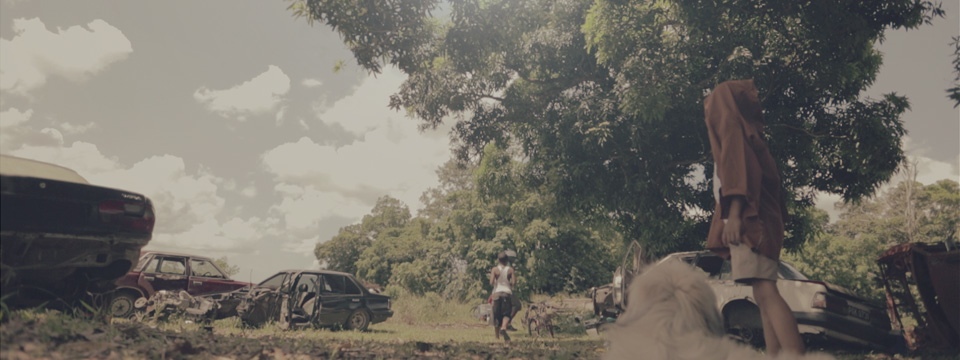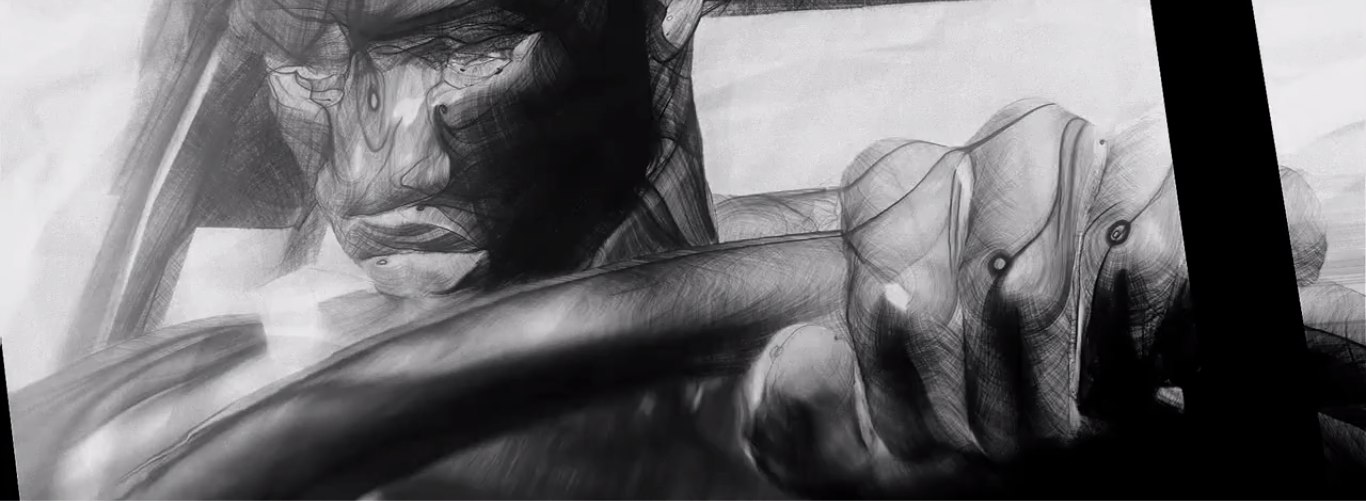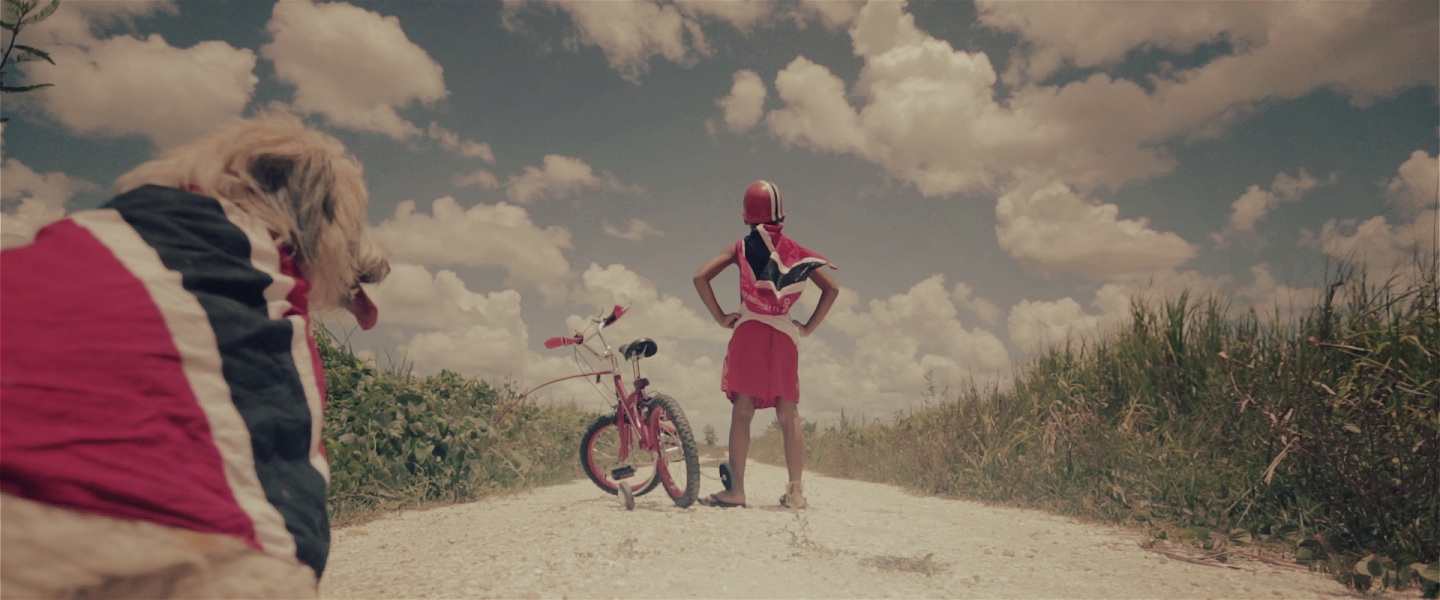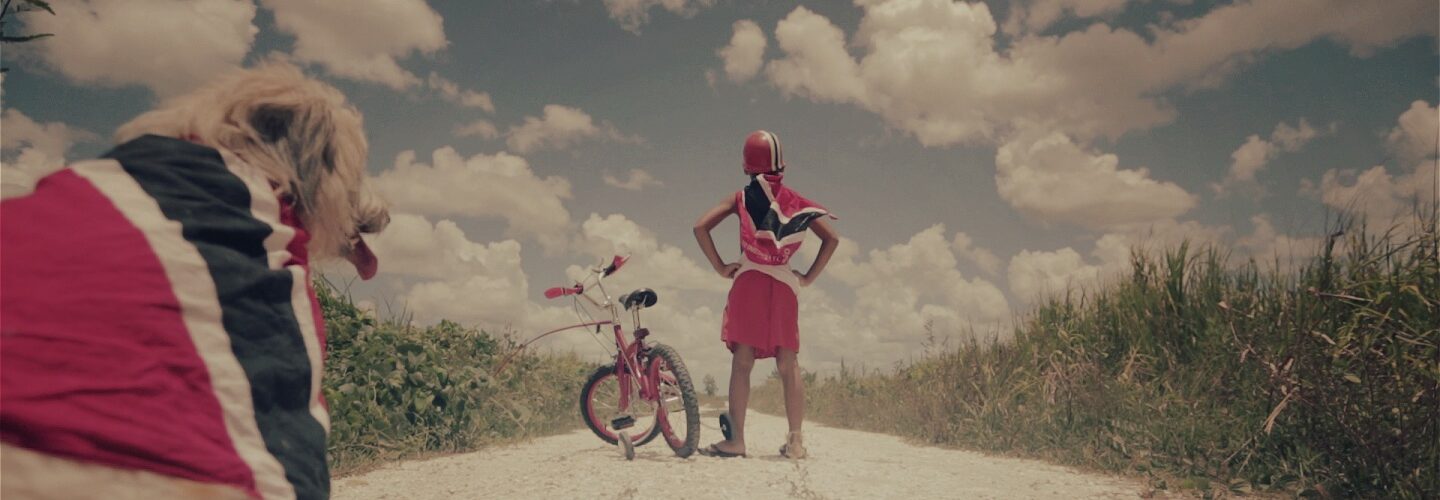
Whilst some superheroes are born and others are made, discovering exactly what super power you have at your disposal can take a certain amount of trial and error. Following on the heels of the four-legged star of 2012 Vimeo Awards finalist Pothound, Christopher Guinness’ newest film Captain T&T sees the inventively imaginative Thin Foot, strive to become the hero of his own life in a world where dark deeds lurk far too close to the surface. We asked Christopher to tell us a little more about his impressively nimble production process.
Your background is as an animator yet both Captain T&T and Pothound before it are predominantly live action films. How did you come to make that shift in disciplines?
The DSLR revolution made me consider shooting live action. Before it seemed out of reach to get good image quality on a budget. These cheap still cameras that were being used for video changed everything. It became simpler and quicker to achieve results than ever before. I still do incorporate animation into my films. In all, animation, live action film, painting, poetry, music are all just different forms of expression to be combined with countless possibilities.
How did the Captain T&T story develop? Were there any particular inspiration points which informed the story?
Part fond childhood memories, part frustration with the political climate of Trinidad and Tobago. The incident in the news report towards the middle of the film is a true story.
How do you and your wife (and Producer) Leizelle Guinness divide the co-writing duties on your scripts?
We’d discuss the initial idea, if it resonates. I’ll type up a quick draft, she’ll break it down, tell me what she thinks works, what doesn’t. Then it becomes a discussion from there till it finishes, constantly changing to become more effective. Many of the best ideas come about when something doesn’t initially work and a compromise must be made.
Many of the best ideas come about when something doesn’t initially work and a compromise must be made.
I can imagine the role of Thin Foot being a dream gig for any young actor. How did you find Kden Hee Chung?
Kden is a friend of the family, as are his parents and siblings. We had previously done a calendar shoot with him 2 years before and remembered how brave and full of energy he was. When we wrote Cap, we had him in mind.
Your films have very distinctive camera styles; the way you jump in and out of subjective POV in Captain T&T to the ‘dog cam’ of Pothound. How did you develop the cinematographic look of Captain T&T?
I always want to take the viewer into the film and experience it, like they are the character. So the POV shots have been a staple for me. Recently I saw it used very well in the film ‘Gravity’. I like to fly the camera around the characters, around the environment. I use a Glidecam or sometimes just hand held. The first few shots in ‘Captain T&T’ are hand held. Also I’m a big fan of 1 point perspective shots, but I incorporate rotations to give a dream like feel.

How did you come to develop the stark b&w animation style of the dream sequence?
Originally the dream sequence was planned as a VFX live action scene. When I worked it out, it was way beyond our budget and schedule. So I opted for a fully animated scene, which at first had a more refined comic approach that evolved into the raw sketchy style, it worked well for the harrowing dream.
You’ve spoken before about getting stuck in the process. Were there any particular technical challenges on Captain T&T which you had to improvise your way out of?
Technical, not so much, but getting the best out of the child actors took a lot of improvisation. I couldn’t approach directing the kids the same way I do with an adult, so we had to do things in a very round about way. It helped a lot that their parents were there as well, as sometimes they had little tricks to communicate what we needed.
There are some dark acts that take place in the film, how did you approach balancing them against the vibrant energy of the surrounding scenes so as not to have the audience crunch against those differing emotional gears?
I tried to be suggestive, not so much explicit. So it was presented and left up to imagination to fill in the rest. It was one of the important themes in the story, the loss of innocence. It took some fine tuning in the editing process, the length of the shots and the use of music had to be right.

That music along with the radio DJ works really well with the overt voiceover and whispered asides. Were all those auditory elements baked into the script? How did you bring them all together in post?
The DJ wasn’t initially in the script. I needed a way to help shape the landscape of Trinidad and Tobago, both the fun loving culture and opposing criminal activity. Music is a big staple of the Trinbagonian culture and the radio is still a very relevant form of media, of reporting and discussion. Our radio personality friend Hypa Hoppa seemed like the perfect guy for the job. It took a bit of experimenting in the editing process but it was a matter of combining the specific topic with the corresponding music and mood of the film so they are all on the same roller coaster, taking you up and down as you go through the story.
What’s the connection between Captain T&T and the Summer Heroes T&T charity?
Well Jaime, the creator of Summer Heroes aims to empower kids through finding their superhero identity, a sentiment ‘Captain T&T’ shares. So we wanted to help get them even more awareness towards consciously minded individuals.
Your films have picked up quite a following online, do you have a particular plan when it comes to a new internet release?
The plan so far has just been to put it out there and see if the ideas resonate. So far we have been pleased. I think if you provide the right material, people will support it.


